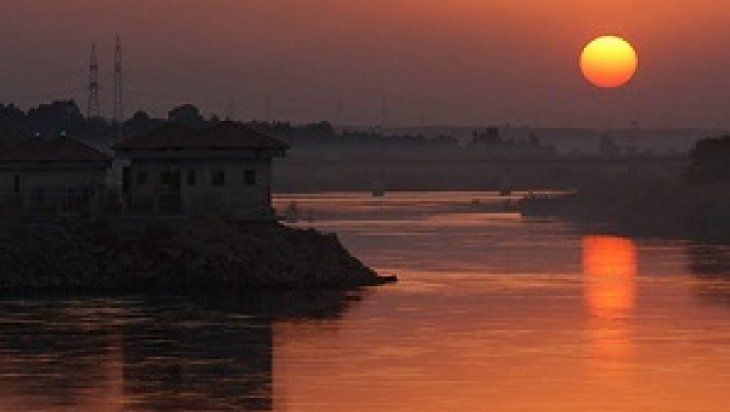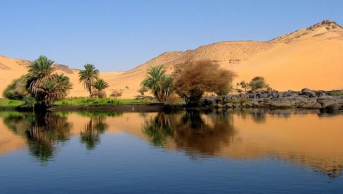Critical Links Between Water and State Authority: Syrian Example

In recent decades, the Middle East witnessed a number of cases where regular state authority diminished and partly replaced by a number of non-state actors. One of the less studied outcomes of this process is related to already stressed water resources of the region. Water is linked to power in the Middle East, perhaps more than any other part of the world it is.
Indeed, water has generally been a catalyst for cooperation. This is even the case in the Middle East where intrastrate rivalries and violence are ubiquitous. One recent example of such cooperation involved Israel and Jordan which agreed on an ambitious project of building up a canal between the Red Sea and the Dead Sea, which is also known as Red-Dead Project. Still however, under Middle Eastern circumstances, water also serves as a source for conflict given the strained socio-political setting in the region at large. Water issues should be taken more seriously for not only a sound water management per se, but also for -perhaps more importantly- sustaning the statehood as well.
There is a two-way interaction with state failure and water. On the one hand water scarcity can trigger a set of events which may in turn undermine state authority. This generally happens through fuelling the escalation of inter-communal or regional conflicts. On the other hand, ineffective state structures may not be able to cope with the pre-existing water scarcity, thereby worsening the situation. In both ways, water security in the region concerned would be negatively affected. Considering the case of Syria, two factors further aggravated existing water risks of the country: rapid popoulation increase and climatic volatilities.
Syria’s population, grew from 3.5 to 22.5 million during the last 60 years (1950-2010).
Aymenn Jawad Al-Tamimi and Oskar Svadkovsky summarize the official population policy in Syria in the last 60 years: “The seeds of the current disaster were planted as far back as 1956, when Youssef Helbaoui – head of economic analysis in Syria's Planning Department – famously declared: ‘A birth control policy has no reason for being in this country. Malthus could not find any followers among us.’ Since then Syria has been living in a state of one uninterrupted demographic cataclysm. The regime was so obsessively pro-natalist that in the early 1970s, the trade and use of contraceptives in Syria were offi cially banned. By 1975, the birth rate reached 50 live births per 1,000 people, with Hafez al-Assad asserting that a ‘high population growth rate and internal migration’ were responsible for stimulating ‘proper socio-economic improvements’ within the development framework. Even when other nations in the Middle East began to take measures to curb their population growth as the danger of demographic collapse started to loom over the region, the regime in Syria was struggling to make up its mind on the issue.” In brief, Syria’s uncontrolled demographic changes, which appeared to be one of the greatest in whole the Middle East, appears to be one of the significant factors contributing to escalation of the water crisis in the country.
Climate change-induced impact was also devastating in Syria, as al-Tamimi and Svadkovsky (2012) note, “agriculture remains a major part of the economy and the lifestyle of a large section of the population, some 20 % of Syria’s GDP being generated by this sector.” It was reported that “aggravation of water scarcity led to the abandonment of around 160 villages in northern Syria in the period 2007–2008. In eastern Syria, the Inezi tribe saw some 85 % of its livestock killed between 2005 and 2010 because of prolonged drought. In 2010 the United Nations estimated that more than a million people have left the northeast of the country” and “by 2011, drought-related crop failure had pushed up to 1.5 million displaced farmers to abandon their land; the displaced became a wellspring of recruits for the Free Syrian Army and for such groups as the Islamic State (also called ISIS) and al Qaeda”. According to Foreign Affairs (2015) “the lack of government help during the drought was a central motivating factor in the antigovernment rebellion”.
There are other factors which made the case worse. Firstly, Syria has two important perennial rivers, namely Orontes and Euphrates, both of which originate in neighboring countries of Lebanon and Turkey, respectively. Therefore, availability of surface waters, an important dimension of water security, largely depends on decisions made outside of the country. There are agreements between Syria and these countries in order to secure adequate flows into Syria. However, due to the intense conflict within the country, it is now very difficult for Syrian authorities to monitor these agreements. Groundwater is another significant source of freshwater which has suffered excessive use for decades.
Now, after more than 2/3 of the Syrian territory being a war zone for years, water related problems peaked. Water infrastructure has been devastated leaving millions of people out of water services, including water for drinking and sanitation. This lack of water services have resulted in the fact that water borne diseases have skyrocketed. Hundreds of thousands of farmers left their fiels amid fears of war and lack of adequate water to irrigate their lands. As a consequence, agricultural output throughout the country has plummeted significantly, causing sporadic but yet critical events of hunger.
Another consequence is the case whereby water has become a weapon of war at the hands of ISIS, causing indiscriminate tragedies to the populations affected. Finally, transboundary cooperation on water management has declined which reduces the chances for integrated basin management which is a must for sound water management in the region. To illustrate, the Friendship Dam project between Syria and Turkey was suspended for more than half a decade.
It is apparent that not only Syria itself, but all countries of the region should focus on water as a priority issue for enhanced stability in their neighborhood. Dependence of huge populations on agriculture as the main way of income necessitates a water-centered stability which requires some level of state authority across all territories. Beside contributing to peace and prosperity in Syria directly, this will also reduce the vacuum that generally results in outsider intervention, something greatly unwelcome by the regional powers.






